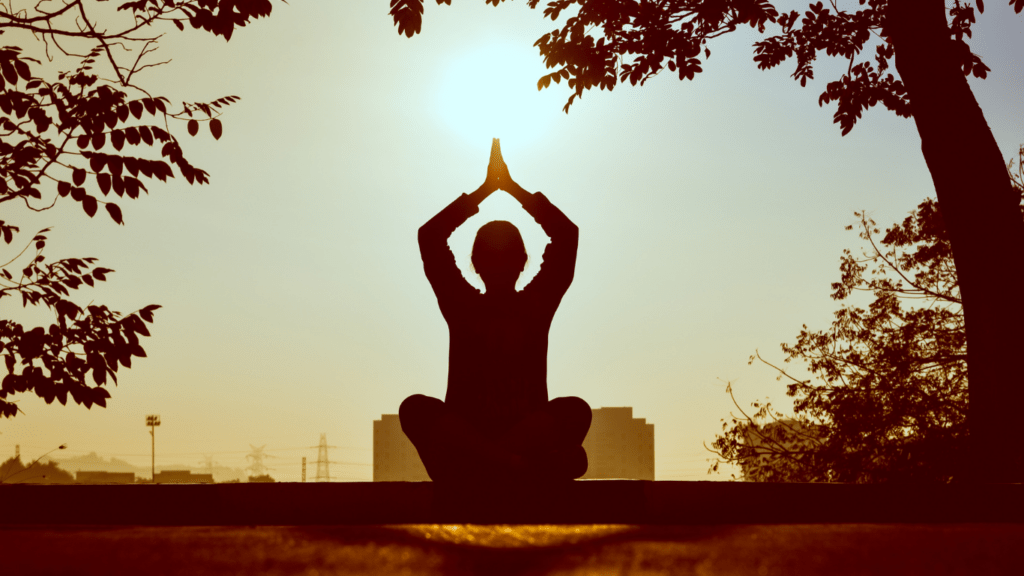Understanding Mindfulness
Mindfulness involves focusing on the present moment intentionally and without judgment. Engaging with thoughts, emotions, and sensations helps cultivate a non-reactive awareness. This principal practice enhances reflective thinking, reducing stress reactions.
Jon Kabat-Zinn, a leading figure in mindfulness research, defines it as “paying attention in a particular way: on purpose, in the present moment, and nonjudgmentally.” His Mindfulness-Based Stress Reduction (MBSR) program demonstrates the tangible benefits of this approach.
Several mindfulness practices exist, including meditation, breathing exercises, and mindful walking. Meditation involves sitting quietly and focusing on one’s breath. Breathing exercises help reduce physiological stress responses. Mindful walking combines awareness with movement, often done in nature to enhance the experience.
Numerous studies support mindfulness’ effectiveness. For example, a 2010 study by Hoffman, Sawyer, Witt, and Oh found that mindfulness can significantly reduce symptoms of depression and anxiety. Another study by Baer in 2003 showed improvements in mental well-being through regular mindfulness practice.
Understanding mindfulness involves recognizing its varied forms and scientifically backed benefits. Applying it consistently can lead to notable improvements in mental health and overall wellbeing.
The Benefits of Mindfulness for Mental Health
Mindfulness offers an array of mental health benefits backed by scientific research. Here, I’ll explore how it can reduce stress and anxiety, enhance emotional regulation, and improve focus and concentration.
Reducing Stress and Anxiety
Mindfulness reduces stress and anxiety by promoting present-moment awareness. When practicing mindfulness, I focus my attention on the here and now, discouraging worries about the future or regrets about the past. Research published in JAMA Internal Medicine reveals that mindfulness meditation significantly reduces symptoms of stress and anxiety. Regular practice helps me manage my stress levels by lowering cortisol, the stress hormone, leading to a calmer state of mind.
Enhancing Emotional Regulation
Mindfulness enhances emotional regulation through intentional and nonjudgmental awareness of emotions. I observe my feelings without trying to change or avoid them, which fosters a balanced emotional response. A study in Behaviour Research and Therapy demonstrates that mindfulness practice leads to better emotional regulation, reducing instances of emotional reactivity and increasing resilience. By acknowledging my emotions without judgment, I find it easier to respond calmly and appropriately in various situations.
Improving Focus and Concentration
Mindfulness improves focus and concentration by training the brain to sustain attention. During mindfulness exercises like meditation, I practice directing my focus to one point, such as my breathing, which strengthens my cognitive control. According to a study in Psychological Science, just two weeks of mindfulness training enhanced individuals’ attention and working memory. This improved focus benefits areas such as work, studies, and personal productivity, helping me stay on task and achieve better results.
Mindfulness offers numerous mental health benefits, playing a crucial role in reducing stress and anxiety, enhancing emotional regulation, and improving focus and concentration.
Mindfulness Techniques and Practices

Engaging in mindfulness offers several techniques to cultivate present-moment awareness. I’ll delve into some primary practices that are both effective and accessible.
Meditation
Meditation serves as one of the most profound mindfulness techniques. I typically start with a simple practice of sitting in a quiet space and focusing on my breath. Beginners might find guided meditations useful, as they provide structure and direction. Numerous apps, like Headspace and Calm, offer guided sessions ranging from 5 to 30 minutes. Meditation reduces cortisol levels and increases gray matter in the brain, which enhances cognitive functions and emotional regulation.
Mindful Breathing
Mindful breathing anchors your attention to the present moment. When I feel stressed or overwhelmed, I take a few minutes to focus solely on my breath. I inhale deeply through my nose, letting my abdomen expand, then exhale slowly through my mouth. This practice immediately calms my nervous system. Research shows that mindful breathing decreases symptoms of anxiety and promotes a state of relaxation.
Body Scan
Body scan meditation heightens body awareness. I lie down in a comfortable position and consciously check in with different parts of my body, starting from my toes and moving up to my head. This practice helps me identify areas of tension and promotes physical and mental relaxation. Studies indicate that body scanning enhances self-awareness and reduces chronic pain and stress.
Success Stories and Real-life Applications
Incorporating mindfulness into daily routines has led to numerous success stories. People from various backgrounds have seen improvements in their mental health and overall well-being.
Personal Testimonials
I’ve encountered many individuals who attribute significant changes in their lives to mindfulness. One example is a friend who struggled with chronic anxiety. After adopting daily mindfulness practices like meditation and deep breathing exercises, they reported a noticeable reduction in anxiety symptoms within a few weeks. They specifically mentioned feeling more in control of their thoughts and emotions, which allowed them to navigate stressful situations more calmly.
Another compelling testimonial comes from a colleague who faced burnout. They integrated mindfulness techniques, particularly mindful walking and body scan meditation, into their routine. Within a month, they experienced improved focus and increased energy levels. These changes didn’t just benefit their professional life; they also noticed a positive shift in their personal relationships.
Clinical Studies
Numerous clinical studies back up these personal stories, highlighting mindfulness’s efficacy in improving mental health. For instance, a study published in the Journal of the American Medical Association (JAMA) examined the effects of an eight-week Mindfulness-Based Stress Reduction (MBSR) program. Participants demonstrated a 38% reduction in symptoms of depression and anxiety post-intervention (Kabat-Zinn et al., 1992).
Another study, published in the journal “Mindfulness,” explored the impact of mindfulness on individuals with generalized anxiety disorder (GAD). The research revealed that participants who practiced mindfulness exhibited a substantial decrease in anxiety symptoms compared to the control group (Hoge et al., 2013). This aligns with the experiences shared by those who practice mindfulness regularly.
These studies, alongside numerous personal testimonials, provide compelling evidence of mindfulness’s positive impact on mental health and well-being.
Tips for Incorporating Mindfulness into Daily Life
Incorporating mindfulness into daily life doesn’t need to be complicated or time-consuming. Here are practical ways to integrate mindfulness seamlessly.
Simple Daily Practices
Mindful practices can fit into the busiest schedules.
- Morning Routine: Begin your day with a few minutes of mindful breathing. Sit comfortably, close your eyes, and focus on your breath. This sets a calm tone for the day.
- Mindful Eating: Pay full attention while eating. Notice the textures, flavors, and aromas of each bite. This enhances your eating experience and helps regulate your appetite.
- Commute Time: Use your travel time to practice mindfulness. Focus on the sensations in your body and the sounds around you, rather than getting lost in thoughts or screens.
- Breaks During Work: Take short breaks to do a quick body scan. Start from your head, moving down to your toes, noticing any tension and consciously releasing it.
- Evening Wind-Down: Dedicate a few minutes before bed to reflect on your day without judgment. Acknowledge your feelings and let go of any stress.
Overcoming Common Challenges
Integrating mindfulness can come with challenges. Here are solutions to common issues:
- Lack of Time: Incorporate mindfulness into existing routines. For example, practice mindful breathing while showering.
- Restlessness: It’s common to feel restless initially. Start with short sessions of 3-5 minutes and gradually increase the duration.
- Boredom: Engage in different mindfulness activities. Alternate between mindful walking, breathing exercises, and guided meditations to keep it interesting.
- Skepticism: If skeptical, try mindfulness with an open mind for a minimum of 8 weeks. Research shows noticeable benefits often appear after consistent practice over this period.
- Distractions: Create a designated quiet space for mindfulness sessions. Inform family members about your practice to minimize interruptions.
Mindfulness can enhance overall well-being. Implement these practical tips to start seeing benefits in your daily life.



 Hiking Trail Guide Expert & Outdoor Adventure Curator
Keturaha Perrymaners is an experienced trail guide and hiking enthusiast with an unparalleled passion for discovering and exploring nature’s most beautiful and secluded paths. As the hiking trail expert at Whisper Forest Ways, Keturaha curates comprehensive guides that cover everything from beginner-friendly walks to challenging multi-day treks. Her deep knowledge of terrain, weather patterns, and outdoor safety ensures that her recommendations cater to hikers of all levels, helping them prepare for their adventures with confidence. Whether you’re seeking scenic trails for mindfulness walks or rugged paths for a physical challenge, Keturaha’s expertly crafted guides provide the insights and inspiration you need to venture into the wilderness and fully immerse yourself in nature’s beauty.
Hiking Trail Guide Expert & Outdoor Adventure Curator
Keturaha Perrymaners is an experienced trail guide and hiking enthusiast with an unparalleled passion for discovering and exploring nature’s most beautiful and secluded paths. As the hiking trail expert at Whisper Forest Ways, Keturaha curates comprehensive guides that cover everything from beginner-friendly walks to challenging multi-day treks. Her deep knowledge of terrain, weather patterns, and outdoor safety ensures that her recommendations cater to hikers of all levels, helping them prepare for their adventures with confidence. Whether you’re seeking scenic trails for mindfulness walks or rugged paths for a physical challenge, Keturaha’s expertly crafted guides provide the insights and inspiration you need to venture into the wilderness and fully immerse yourself in nature’s beauty.
